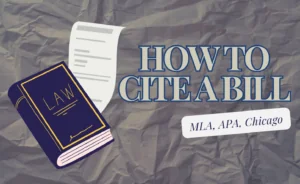When writing academic papers, legal documents, or engaging in scholarly discussion, correctly citing the Constitution of the United States is crucial for clarity, accuracy, and respect for the source material. This guide outlines the essential steps and considerations for properly citing the U.S. Constitution in various citation styles, including the Modern Language Association (MLA), American Psychological Association (APA), Chicago Manual of Style (Chicago), and Bluebook formats.

✅ AI Essay Writer ✅ AI Detector ✅ Plagchecker ✅ Paraphraser
✅ Summarizer ✅ Citation Generator
The U.S. Constitution
The U.S. Constitution is a foundational legal document, comprising seven articles that establish the framework of the federal government, its powers, and the relationship with the states and citizens. Additionally, there are 27 amendments, including the Bill of Rights, which consist of the first ten amendments.
The United States Constitution is a monumental document in American history and the broader history of democratic governance worldwide. Ratified in 1788, it succeeded the Articles of Confederation and Perpetual Union, aiming to create a stronger federal government while balancing power among its three branches: legislative, executive, and judicial.
The Constitution’s preamble sets forth its purpose: to establish justice, ensure domestic tranquility, provide for the common defense, promote the general welfare, and secure the blessings of liberty. These goals reflect the Founding Fathers’ vision for a new nation that values freedom, equality, and governance by the people.
The significance of the document lies not only in its establishment of the U.S. government’s structure but also in its embodiment of the principles of democracy and rule of law. It has inspired numerous nations worldwide in crafting their own constitutions and governance systems.
How to Cite The Constitution
There are a few general tips before citing, if you don’t know how to cite evidence. First, you need to identify the specific section. Clearly note the Article, Amendment, Section, and Clause you’re referencing. Second, using a trusted source is necessary for proper results. Access the Constitution from a reliable, scholarly source for accuracy.
MLA Style
In MLA style, you typically cite the Constitution by referring to it in the text of your paper. If you mention it in a works-cited list, you do not need to include a publication date or a publisher, as it is a well-known, historical document.
In-text citation: reference specific parts by using abbreviated forms, e.g., “Art. 1, Sec. 2, Cl. 3” for Article 1, Section 2, Clause 3.

Works-cited entry (optional):
“Constitution of the United States.” Constitutional Texts: The Constitution of the United States of America, edited by [Editor’s Name], [Publisher], [Year].
APA Style
APA style typically does not require a citation in the reference list for the U.S. Constitution. Instead, refer to it in the text and provide details.
In-text citation: include the name, year, and specific section when you first mention it in the text.

Chicago Manual of Style
Chicago style offers flexibility for citing historical documents like the Constitution, focusing on footnotes and endnotes, and is available in our law citation generator.
Note citation: in a note, mention the document part and use abbreviations for “article” (art.), “section” (sec.), and “amendment” (amend.).

Bibliography entry (rarely required): similar to MLA, provide a full citation only if you’re working with a specific edition.
- “Constitution of the United States.” In The Founding Documents of the United States of America, edited by [Editor’s Name], [pages]. [City]: [Publisher], [Year].
Bluebook (Legal Documents)
The Bluebook format is prevalent in legal documents and scholarly legal articles, focusing on precise references.
In-text citation: cite the Constitution in the text with abbreviations for “article” (art.), “section” (sec.), “amendment” (amend.), and include the year in parentheses.

Conclusion
Properly citing the U.S. Constitution not only adheres to academic and legal standards but also shows respect for the foundational legal document of the United States. Each citation style has its nuances, so it’s essential to choose the appropriate one based on the context of your work and to consult the latest edition of the citation guide you’re following to ensure accuracy.
FAQ
Follow us on Reddit for more insights and updates.





Comments (0)
Welcome to A*Help comments!
We’re all about debate and discussion at A*Help.
We value the diverse opinions of users, so you may find points of view that you don’t agree with. And that’s cool. However, there are certain things we’re not OK with: attempts to manipulate our data in any way, for example, or the posting of discriminative, offensive, hateful, or disparaging material.